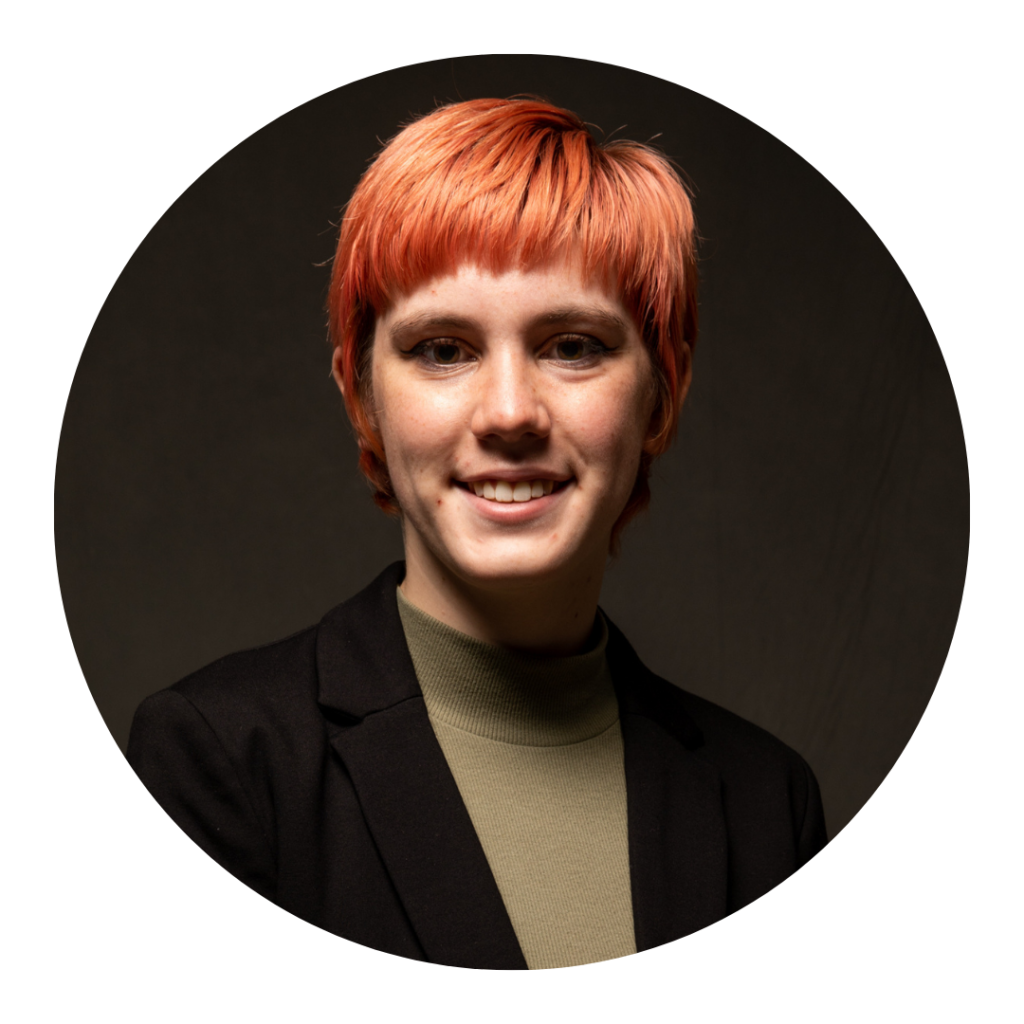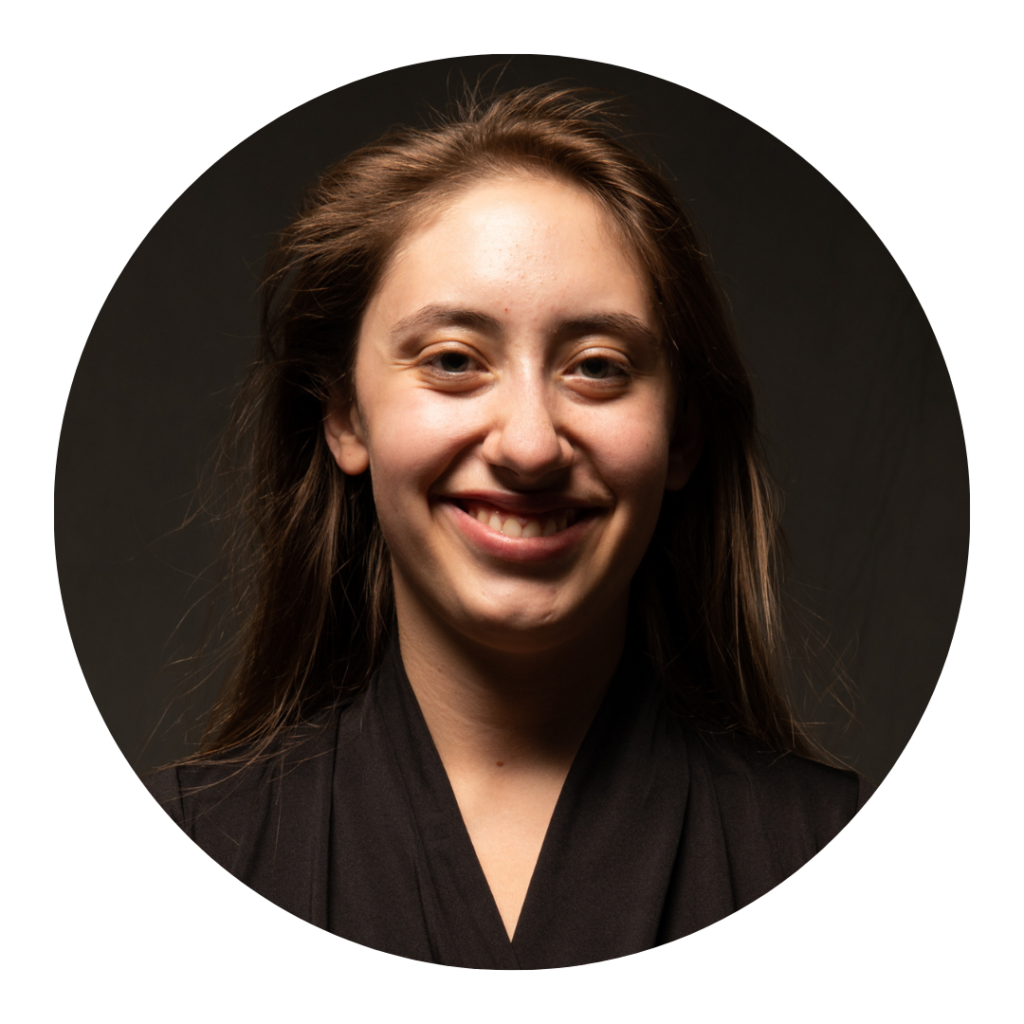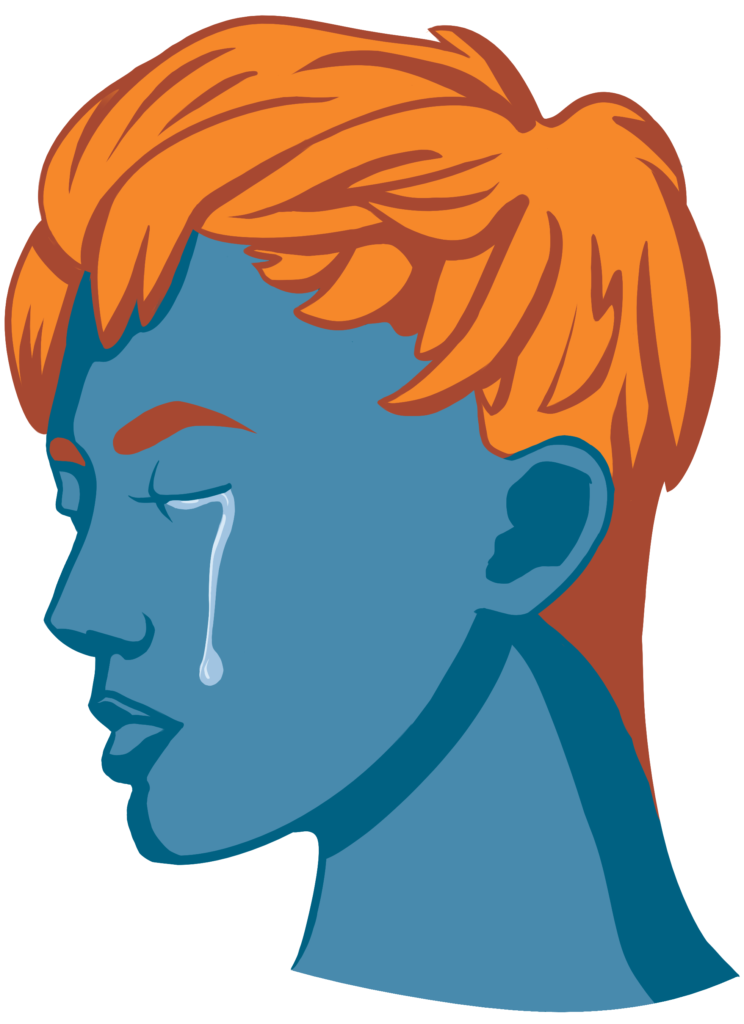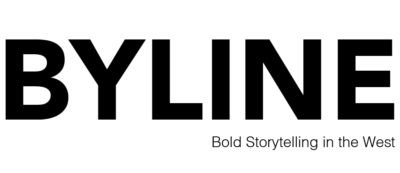Misrepresented
and Misunderstood
Why media needs to listen to autistics

Essay by Ella Musgrove

Illustration by MaKayla O’Neil
The hardest thing about being autistic is not the actual autism. It’s the way we’re expected to live in a world not built for us.
A lot of the traits most associated with autistic people, things like being nonspeaking, or stimming — a behavior meant to provide more or less stimulation — or even not making eye contact, are things non autistic people in media and organizations like Autism Speaks have tried to erase. This is part of the reason why autism is so misrepresented in the media.
There are bad examples of autism representation, such as characters who are either offensive because of the obvious lack of time that went into including the autistic community in media representation about themselves, or the generic autistic savants who set an unrealistic standard. Recently though, there has been some better representation of those on the spectrum which included more variety in what autism looks like. But why does good representation matter in the first place?
Tiffany Hammond, the face behind the popular @fidgets.and.fries Instagram account, understands that it is important to be included. Her account, which has a focus on activism for the autistic community, goes in depth about her personal feelings as a Black autistic woman, but also her experience as a mother to her two autistic sons. However, as opposed to just focusing on educating non-autistic viewers, she also speaks to those on the spectrum. She and other BIPOC (Black, Indigenous, people of color) creators must represent themselves because they are often ignored or excluded from sharing their point of view.

After Hammond started her Instagram account, she said she felt disheartened from all the hate she got about broaching intersectionality.
“Every time you said something there was all this pushback and anger and all this hate,” Hammond said. “And now, I still get the hate, still get the anger, it’s just not as big.”
Intersectionality is all about the layers of discrimination someone may face. A person could be Black and speaking-autistic or white and nonspeaking-autistic, and their experiences are fundamentally different. Hammond cites having lower economic status, having mental health issues and identifying as LGBTQIA+ as additional layers of oppression along with being autistic.
Intersectionality is all about the layers of discrimination someone may face. A person could be Black and speaking-autistic or white and nonspeaking-autistic, and their experiences are fundamentally different. Hammond cites having lower economic status, having mental health issues and identifying as LGBTQIA+ as additional layers of oppression along with being autistic.
Hammond started posting regular content about autism and intersectionality in June 2020 and she’s only gotten more vocal since then. She discusses race and how people in the autistic community ignore those who try to incorporate other identities within autism.
“There needs to be some specific attention drawn toward those who are Black, those who are aged, those who are trans, those who are nonspeaking, so there’s a lot of different layers [within the autistic community],” she said.
Tim Boykin, a Black autistic influencer by the handle of @blackautisticking on TikTok, agreed and said he wants to see more BIPOC autistics, and everything in between on the screen.
Boykin started posting about autism and advocacy in 2019, sharing everything on his platform from singing videos to how he sees the world as a Black autistic man.
“I wish media could stop portraying autistic people as deadpan, and also white, and usually straight,” he said. “And I also want to see autistic people who are not always that smart.”
Autistic people want to see authentic representation of our struggles. However, we also want to show the good parts of ourselves too. Sometimes the media focuses too much on how we have meltdowns, but doesn’t include, for example, being detail-oriented or our excitement for our special interests.
“The bad about autism has been shown too many times. They should promote more of the good about autism, just as much as the bad,” Boykin said. “It is very beautiful to see good representation toward people like me because it’s something to look up to, something to admire. We’re not just something bad that people see, we are something more than that.”
Boykin and Hammond argue part of the issue is that autism advocates, who are largely white, speaking-autistic people, are not listening to the intersectionality argument.
“Even when we’re sitting at these tables with everyone else, it still involves society listening, it still involves other autistic people listening,” Hammond said.
Boykin echoed that sentiment and said, “I feel like I’m excluded out of the picture because I don’t see that many autistic Black people.”
A lack of Black autistic representation leads to an imbalance in how the world views autism. Just like showing only smart, autistic, white men in the media leads to an incomplete view of the autistic community. Showing only white autistic people and not BIPOC, or only men and not women affects outsiders’ view on what autism is and who has it.
Jennifer Closson, assistant clinical professor in the speech and language school and director of the University of Montana’s MOSSAIC (Mentoring, Organization, and Social Support for Autism/All Inclusion on Campus) program, is also an advocate for autistic people. Instead of a social media platform though, she uses her professor status to educate people on autism and provide safe spaces on campus for students on the spectrum through her program.
“If people on the spectrum can have a safe space, and the support that they need to be successful … we’re gonna have more people achieve their dreams,” she said.
Closson also gives a presentation every year at DiverseU, a campus wide event that promotes diversity and discussion on social issues.
Closson said part of her reasoning behind wanting an inclusive space, having discussions surrounding diversity and wanting to see more accurate media portrayal, is because it promotes awareness and acceptance.
Despite the large strides Hammond, Boykin and Closson have taken for inclusion and representation for autistic people, there are some people who misrepresent autism by favoring one perspective — their own.
Autism Speaks, an organization that appears to help all on the spectrum, provides one of the most damaging representations of autism yet, and they’ve been doing so since 2005. Starting as a nonprofit made by Bob and Suzanne Wright, it quickly became one of the country’s most widely used resources for information about autism, helping parents find therapies and other services for their kids.
John Elder Robison was one of the few autistic people formerly on staff of Autism Speaks. He was a member of the Science and Treatment boards. He wrote in a blog post on November 13, 2013 that he was resigning after two years, because he could no longer continue to support an organization with ideas so different from his own. As an autistic advocate, Robison tried to change the Autism Speaks organization from the inside, but found that it was more deeply rooted in ableist ideals than he previously thought.
“No one says the Cancer Society does not speak for them,” Robison said, referencing, “Autism Speaks does not speak for me,” a saying people on the spectrum use to indicate they would prefer Autism Speaks stop speaking over them.“Autism Speaks is honestly not the best company,” Boykin echoed. “They promote themselves as like this wonderful and loving place, but if you actually look into them you can see that they have a crooked past.”
Although it may be in the company’s past, they have never formally apologized for videos like, “I am Autism.” Released in September 2009, it starts with, “I am autism. I’m visible in your children, but if I can help it, I am invisible to you until it’s too late.” The video demonizes and fearmongers autism, treating it like a disease that ruins our life like cancer. Actually, that’s not fair to cancer. People with cancer are still treated like human beings.
Their current goals for research enforce this idea that autism is a disease. MSSNG, a research program focused on genome sequencing, provides researchers with sequenced genomes from those on the spectrum. As stated on the website, their goal is “to speed the development of more effective and personalized interventions for autism and its associated health conditions.”
This would all be fine and dandy, but this research about the genetic cause of autism could only lead to eugenics, or the practice of selective reproduction by means of picking more “desirable” children, i.e. parents who get pre-screened may find out their child is autistic and decide not to have the baby. It’s worse than a cure, its eradication.
This idea that autism is somehow a disease has never, and likely will never, leave the roots of Autism Speaks, and that is why those on the spectrum tend to distrust this organization. But there are two sides to every story.
While being an autistic advocate for herself, Hammond is also a mother of two autistic sons, one of whom is nonspeaking. She felt conflicted about Autism Speaks since they were the only ones, back in the early 2000s, who had the resources available to help her and her family.
“I feel like they do a lot of things that are harmful to autistic people,” she said. “They have a lot of positions that are not helpful, [but] they do help a lot of parents in some ways.”
“I feel for a lot of parents who are like us,” Hammond said. She said as a parent of an autistic child, she was looking for the right answers, like many parents. Autism Speaks seemed to have all the answers, but we’ve come a long way since then.
Not everyone chooses to educate themselves on what can cause harm to autistic people.
As a child, you probably saw characters like you on the screen all the time. You turn on the TV — maybe the Disney Channel or Nickelodeon — and you’re immersed in a world of characters who look like you, act like you and think like you.
However, if you’re on the autism spectrum like me, all you know is that these characters are not meant to be you.
Recent shows have tried to provide representation like that — and failed. “Music” is a movie directed by Australian singer-songwriter Sia. It is about a non-speaking autistic girl named Music, played by Maddie Ziegler, whose older sister, played by Kate Hudson, comes home to take care of Music after their grandmother dies.
In case you’re about to look up the answer to the question you’re surely asking yourself, no, Ziegler is not autistic. Neither is Keir Gilchrist, an actor who plays the autistic main lead in the hit Netflix original series “Atypical.”

This trend of neurotypical actors playing neurodivergent roles is offensive, especially considering that when the work day is over, they can take off those neurodivergent traits and go back to their lives. Neurodivergent people should always play those roles, just like how any other minority should always be played by a member of that minority — or any other discriminated group of people for that matter.
However, the faults of some of these horrific pieces of autistic representation don’t stop at just the actors not being autistic. Sia reportedly used Autism Speaks as a source for much of the movie and even used some controversial therapy tools in some of the scenes — the scenes which were later removed from the final picture.
The scenes included restraining, a tactic that is highly controversial within the autistic community. Prone restraint, the type used upon the autistic character in the movie, has actually been linked to many cases of abuse and death, due to its characteristics of holding someone down against the floor and sometimes even suffocating them.
How could “Music” have better represented the autistic community though?
Sia should have consulted the autistic community, maybe even hired an autistic consultant who would have helped her not reinforce harmful stereotypes. She also should have hired an autistic actress to play the supporting female lead because autistic characters should, and need to, be played by autistic people.
However, there are some examples of good representation in media. “She-Ra and the Princesses of Power,” created by Noelle Stevenson, is one of them. While it has been hailed for its exceptional LGBTQIA+ representation, it’s how the character Entrapta is depicted in the show that has been healing for many on the spectrum.
Entrapta, voiced by Christine Woods, is a lovable character for many reasons: She’s endearing, a tech-genius extraordinaire and even though she has trouble relating to the other princesses, she still cares a heck of a lot. While it wasn’t ever explicitly said in the show, Stevenson confirmed after the show ended in May 2020 that Entrapta is autistic and an autistic member of the crew, board artist Sam Szymanski, was a point of reference for the character.
One of the scenes in particular that was well done was in Season 5, Episode 2, “Launch,” where the other princesses must work together to solve a problem. However, Entrapta and the other princesses have an obvious lack of communication and things eventually go haywire.
When one of the princesses shouts at her for her apparent lack of concern about people, Entrapta apologizes, saying she’s not “good at people, but I am good at tech. I thought maybe if I could use tech to help you, you’d like me.”
After watching this, at age 18, I burst into tears. I had to pause the show and cry because this moment right here — this was the first time I felt seen on screen. It makes me cry just thinking about it.
This is great to see in a children’s show and I can only wish I was a child right now, seeing Entrapta’s adventures growing up instead of character after character who kind of sort of acts like me, but isn’t me.
Another example of exemplary representation of the spectrum is a short Pixar Animation Studios film called “Loop” featured on Disney+. This time, with a nonverbal autistic voice actress playing the role of nonverbal autistic character Renee.
This short film is centered on Renee, voiced by Madison Bandy, and Marcus, voiced by Christiano Delgado, and Marcus’ attempt to help Renee after he inadvertently causes Renee to have a meltdown. What I like about this portrayal is that Marcus isn’t made out to be a hero. I also greatly appreciate the discourse he has with Renee. He apologizes for scaring her and allows her time to regulate her emotions.
This film garnered attention from outside the autistic community and helped show an honest side to someone with different needs and behaviors, without making her struggles out to be a disease.
But this is still not enough. We need to continue to see good representation like this, especially with more explorations into intersectionality. We want to see gay autistic people, Black transgender autistic people and autistic people who are dealing with financial hardships. How do they navigate all these layers of discrimination and which ones affect them more?
The autistic community certainly isn’t asking for much, are we? We want strong autistic characters who act like us and feel like us without having to apologize. We want to see those representing us actually care about the process and be willing to learn. And we want people to stop assuming they know what we look like and how we feel. Those on the spectrum are talking, it’s time for everyone else to start listening.

Facebook
Twitter
Instagram

Copyright © [hfe_current_year] Byline Magazine
